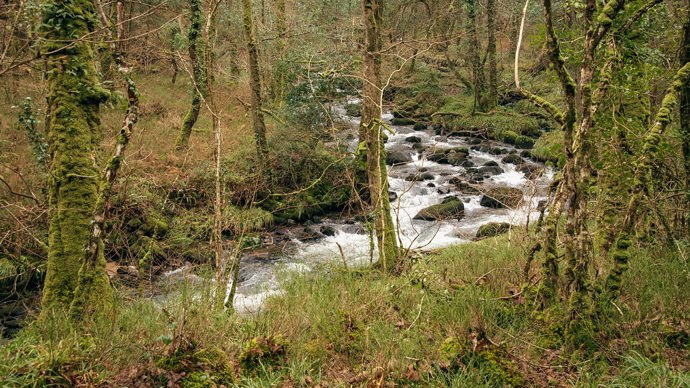
Credit: Phil Formby / WTML
Buckland Wood, Devon
Our latest acquisition is a precious fragment of the UK’s temperate rainforest that is beginning its journey back to life, thanks to your support. Based on what we’ve learned from restoring neighbouring Ausewell, we know that Buckland Wood has the potential to support many threatened species, including mammals like dormice, otters and 12 species of bats, as well as breeding winter migrant birds like goshawk and peregrine falcon.
The restoration ahead is complex but full of promise. With your help, we’ll be gradually thinning non-native conifers, removing invasive species, and managing light levels, ground flora and deadwood. It won’t happen overnight, but together, we’re helping Buckland Wood become a thriving, healthy ancient woodland once more.











